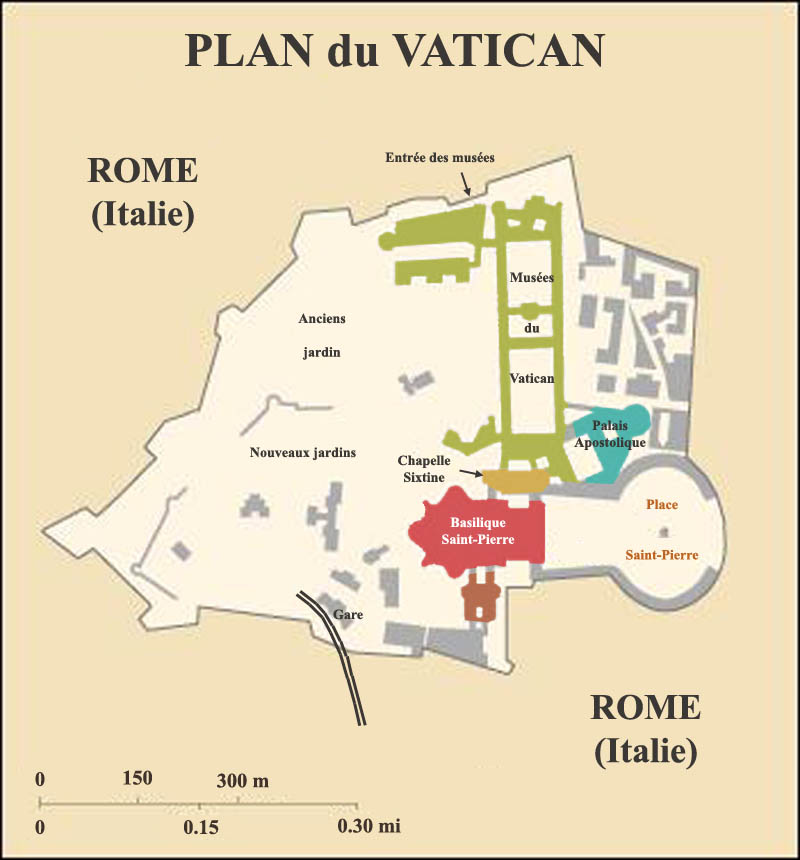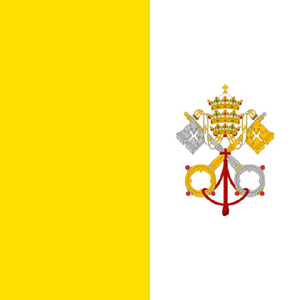
Vatican Flag
The Vatican City is an independent state under the sovereignty of the Holy See through the authority of the Pope of the Catholic Church, who rules as an absolute monarch.
It is a recognized state but not a member of the UN, where it holds observer status. The official creation of this state dates back to February 11, 1929, with the signing of the Lateran Treaty.
Overview of Vatican City
With an area of only 0.44 km², enclosed within the city of Rome, the Vatican (the State of Vatican City, or Città del Vaticano to be precise) is the smallest independent state in the world, both in terms of area and population, with 824 inhabitants in 2008.
However, the territories owned by the Holy See—without its sovereignty—are much larger, over 10 km² (five times the size of the Principality of Monaco), including many extraterritorial zones.
The main language is Italian, not Latin, which remains the legal language of the Roman Catholic Church at the Vatican. French is used as the diplomatic language, with the Vatican registered as a French-speaking state in international organizations. The official language of the Vatican’s army, the Swiss Guard, is German.
Visiting the Vatican: a Concentration of Art, History, and Spirituality
The Vatican is a concentrated hub of history, art, and spirituality. Located in the heart of Rome, it houses invaluable treasures such as the Vatican Museums, the Sistine Chapel, the St. Peter’s Basilica, and its famous gardens. A full visit can last between 6 and 8 hours, or even a full day for the most interested visitors. Booking tickets in advance is strongly recommended, particularly to avoid long queues.
Access to the basilica is free, but entry to the museums and the dome is paid. For a more enriching experience, a guided tour is advised, providing detailed explanations and privileged access to certain sites. Night or private tours are also available for a more intimate experience.
Things to See and Do in the Vatican
- Vatican Museums
The Vatican Museums house impressive collections, including the Sistine Chapel and its famous Michelangelo frescoes. The museum’s exhibitions and galleries allow visitors to explore Egyptian, Greco-Roman, and Italian Renaissance art. - Sistine Chapel
Tip: Visit early in the morning or late in the afternoon to avoid the crowds. - St. Peter’s Basilica
St. Peter’s Basilica is a must-see for its façade, the majestic square, and Michelangelo’s dome, offering a panoramic view of Rome.
The Vatican Necropolis under the basilica allows visitors to discover ancient tombs, including that of Saint Peter.
Entry: Free via Via della Conciliazione
Paid options: Dome climb (€8 via stairs, €10 via elevator)
Access through the Sistine Chapel via a reserved passage (for groups or guided tours only) - St. Peter’s Square
St. Peter’s Square and Bernini’s colonnades form a notable gathering place, particularly for papal audiences. - Vatican Gardens
The Vatican Gardens, accessible via guided tour, offer a peaceful green space in the heart of the Papal State.
Access: Only with a pre-booked guided tour
Duration: About 2 hours
Highlights: Panoramic views, fountains, statues, and lush vegetation - Papal Audiences
When: Every Wednesday at 9:30 AM (except on special occasions)
Location: St. Peter’s Square
Access: Free, but a ticket is required (advance reservation recommended)
History of the Vatican
The Church State has existed for about a millennium, once extending over a large part of Central Italy, forming the territorial base of the temporal power of the Popes until 1870, when on September 20, the Bersaglieri of the Kingdom of Italy entered Rome through a breach in the Porta Pia. Rome was annexed to the Kingdom and declared the capital, ending the temporal power exercised by the Church.
Pope Pius IX did not consent to this unilateral act by Italy and considered himself a prisoner in the Vatican: the Roman Question then began, which troubled relations between the Kingdom of Italy and the Catholic Church for 59 years.
After lengthy diplomatic negotiations, the Question was resolved on February 11, 1929, with the Lateran Treaty, which mutually recognized independence and sovereignty.
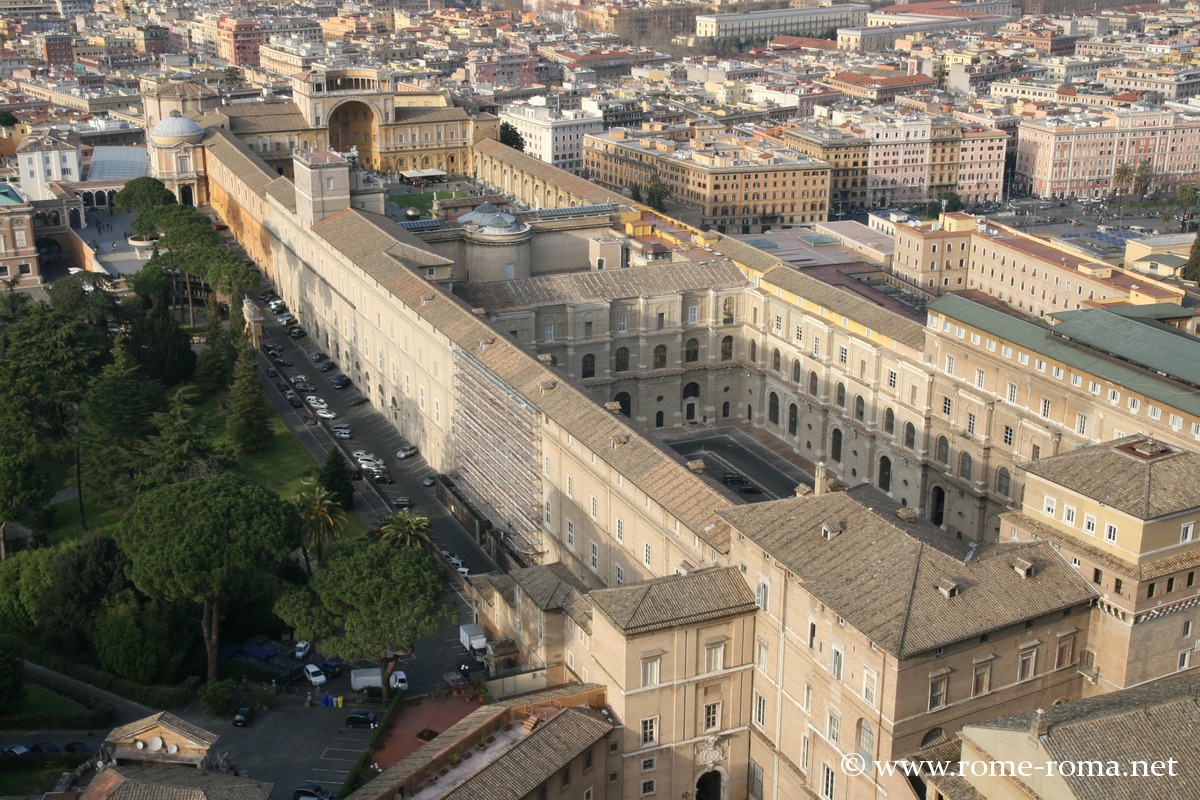
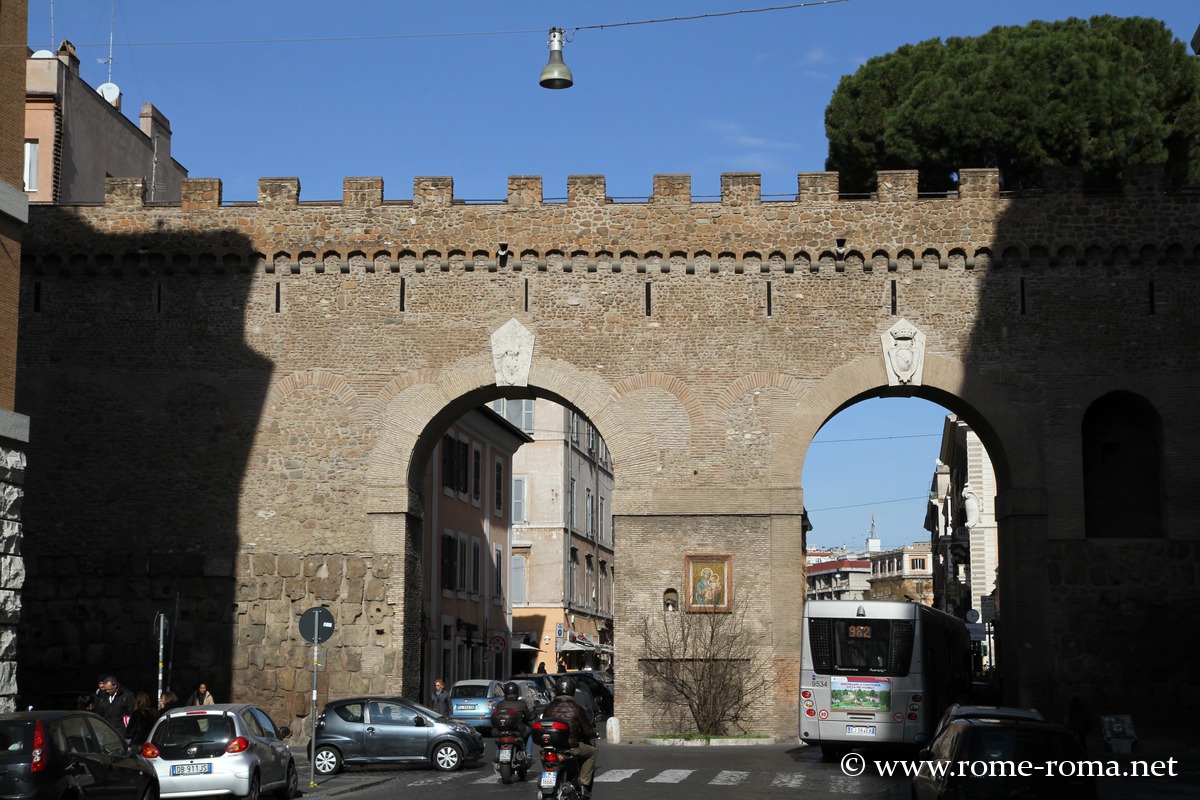
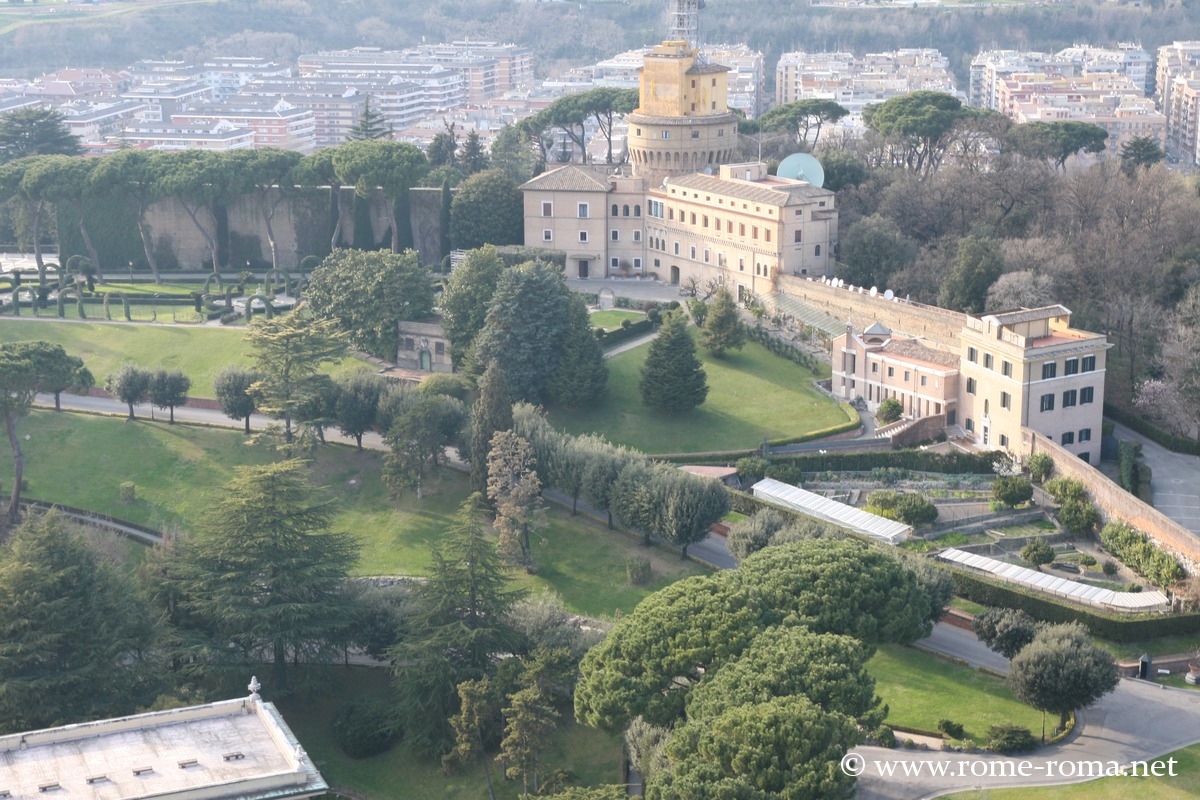
Vatican Map
Ancient views in art
Map and address
Address : Città del Vaticano, 00120 Vatican CityIf you see this after your page is loaded completely, leafletJS files are missing.
Information and Articles
| Vatican City |
Sources and Links
|
Articles on the Vatican
- St. Peter’s Basilica in the Vatican
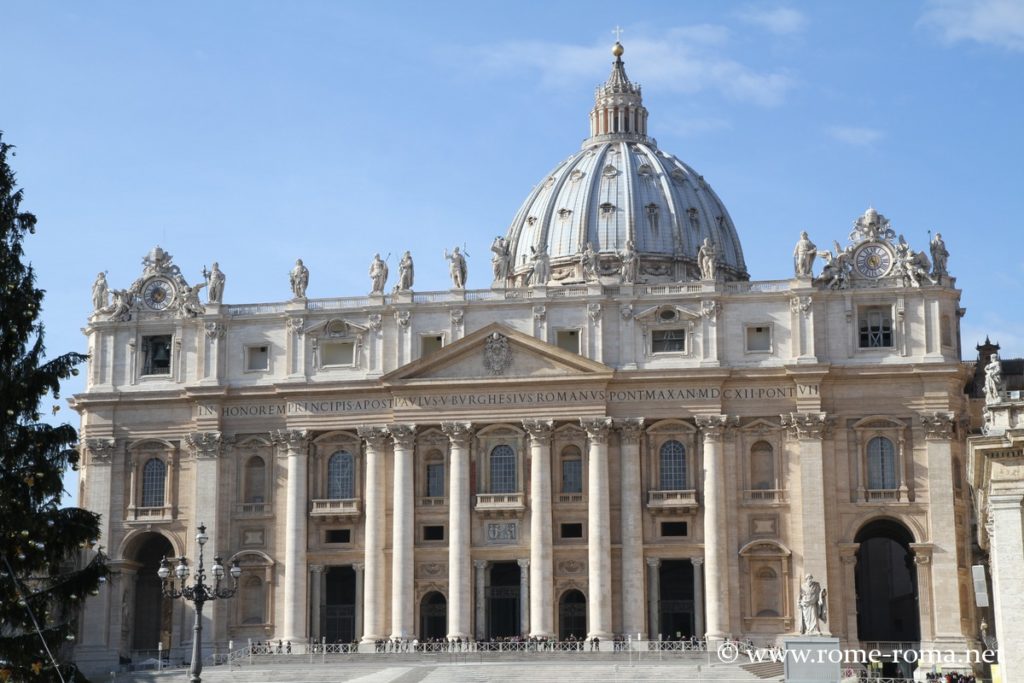 Discover the Saint-Pierre Basilica of Rome: visit, description and history. Built on the tomb of the apostle Peter which would ...
Discover the Saint-Pierre Basilica of Rome: visit, description and history. Built on the tomb of the apostle Peter which would ... - Saint Peter’s Square in Rome
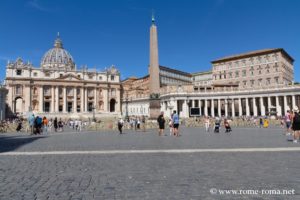 St. Peter’s Square (Piazza San Pietro), located in front of the magnificent St. Peter’s Basilica in the Vatican, is an ...
St. Peter’s Square (Piazza San Pietro), located in front of the magnificent St. Peter’s Basilica in the Vatican, is an ... - Vatican Museums
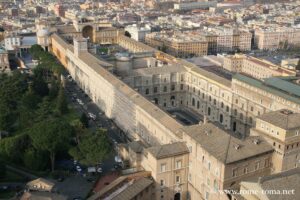 General Overview The Vatican Museums, located in the heart of the Vatican City, are among the world’s most prestigious and extensive ...
General Overview The Vatican Museums, located in the heart of the Vatican City, are among the world’s most prestigious and extensive ... - Vatican City
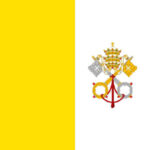 The Vatican City is an independent state under the sovereignty of the Holy See through the authority of the Pope ...
The Vatican City is an independent state under the sovereignty of the Holy See through the authority of the Pope ... - Sistine Chapel
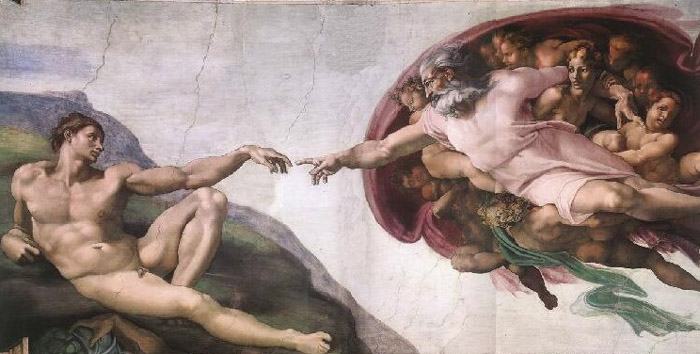 Visit the Sistine Chapel in Rome, whose vault was created by Michelangelo in the 16th century, located in the pontifical ...
Visit the Sistine Chapel in Rome, whose vault was created by Michelangelo in the 16th century, located in the pontifical ...

